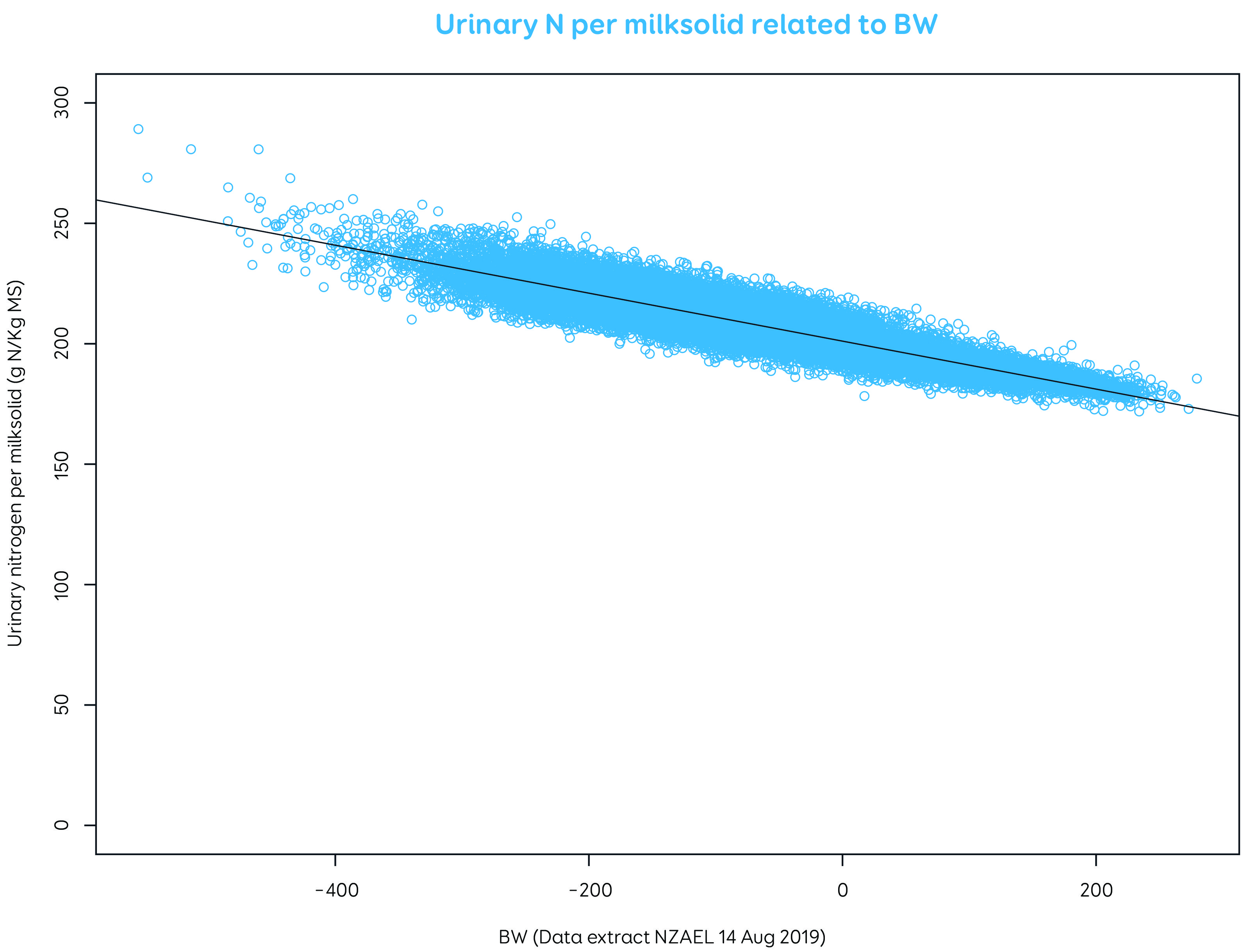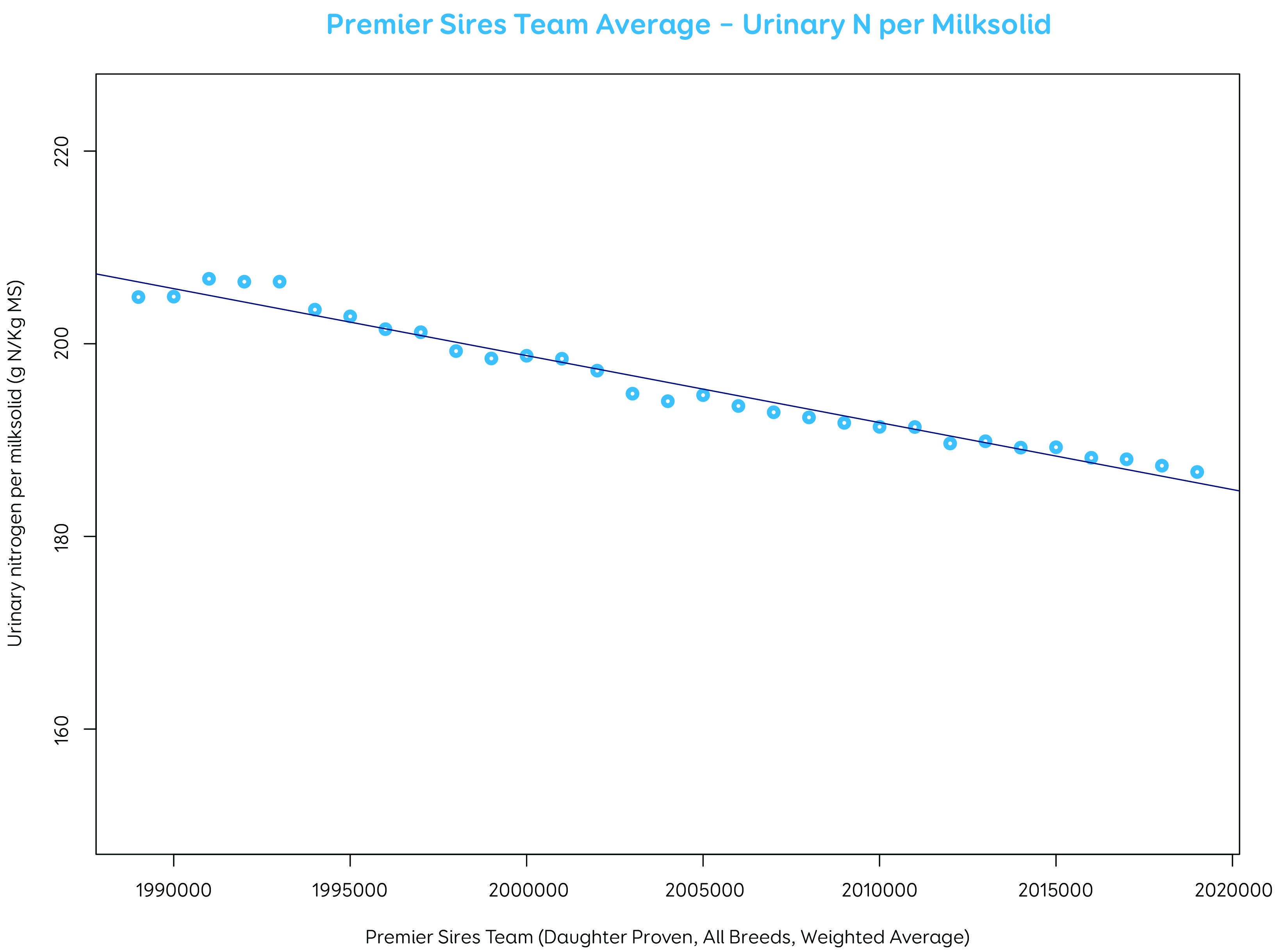 By Tony Fransen, Environment and Welfare Manager.
By Tony Fransen, Environment and Welfare Manager.
Nitrogen loss associated with cow urine patches and methane emissions from cow burps are demanding more attention due to their environmental effects, media interest, and regulatory change.
LIC has always focused on breeding and selecting for cows which efficiently convert the food they eat into milk production, while maintaining important attributes needed to maximise the productive life of the cow.
Since its inception in 1996, Breeding Worth (BW) has been, and still is, a great indicator of environmental efficiency.
It’s a strong assumption then, that when it comes to improving both nitrogen and methane efficiency of cows, a key driver would be the animal’s ability to maximise production output per kilogram of feed eaten.
Until now, however, the relationship between good genetic merit animals and nitrogen output and efficiency was yet to be formally quantified by LIC.
The calculations described in this article were done with three steps:
- by looking at a wider breeding bull population;
- by looking at the Premier Sires bull teams, and;
- by validating the findings with cow data.
The first step was to use the NZAEL database of breeding bulls across all dairy breeds.
The analysis indicates that BW shows a good relationship with how much urinary nitrogen is produced by animal per kilogram of milksolid produced (see graph 1).

For every $10BW increase, there was 1.0g less urinary nitrogen produced per kilogram milksolid.
These results align with the DairyNZ research, with high BW and low BW cows in metabolic stalls comparing intake, output, and partitioning.
High BW cows showed greater nitrogen efficiency, higher levels of nitrogen being in milk protein and lower amounts of nitrogen in urine.
The second stage was to see how the LIC Daughter Proven Premier Sires team (including Friesian, Jersey and KiwiCross®) has improved over time.
Using the weighted average from the number of straws sold each year, graph 2 shows how the urinary nitrogen calculated per kilogram of milksolid has progressively decreased by 0.22% per year (7% over 30 years) as LIC has pushed for greater animal efficiency.

LIC has made these improvements in environmental efficiency through BW being a sound measure of overall efficiency of a dairy animal.
This has enabled the breeding programme to select the best all round genetics which has resulted in consistent genetic gain.
So when making decisions on a breeding programme, remember that BW is a key measure of the overall efficiency of the animal, including environmental efficiency.
- Woodward S.L., Waghorn G.C., Bryant M.A., and Mandok K., (2011) Are high breeding worth index cows more feed conversion efficient and nitrogen use efficient?, DairyNZ, Proceedings of the New Zealand Society of Animal Production 2011. Vol 71: 109-113




